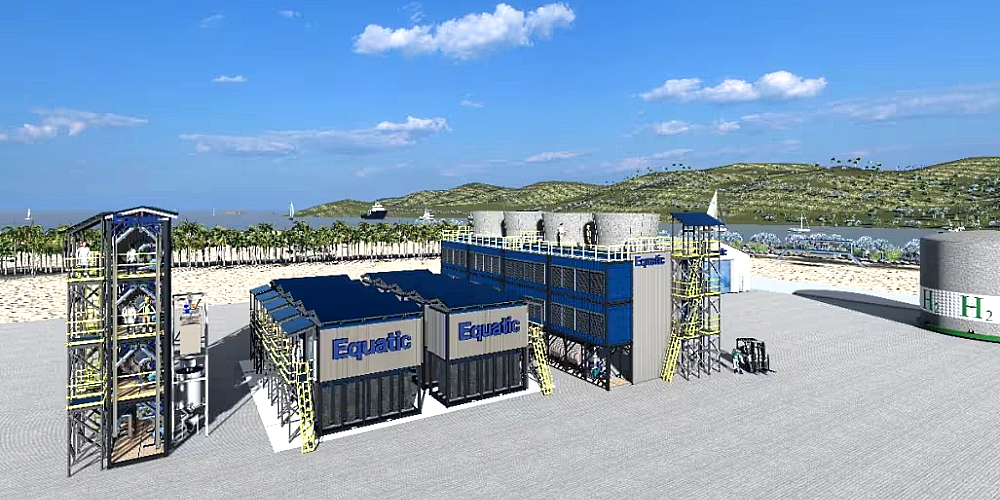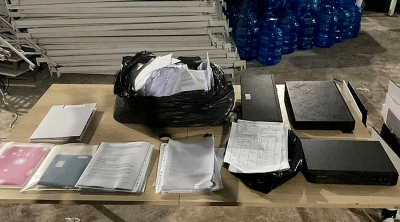
SINGAPORE: As part of its efforts to tackle climate change, Singapore will be constructing the world’s largest facility to boost the ocean’s ability to absorb carbon dioxide (CO2) from the atmosphere.
The US$20 million (RM95 million) plant, once fully operational in 2025, will be able to remove some 3,650 tons of CO2 from the ocean yearly, while helping PUB to decarbonize its water treatment processes, the national water agency said on Feb. 27.
When the seawater is pumped back into the ocean, it has the capacity to absorb more CO2 from the atmosphere.
The plan comes after two smaller pilot facilities – one in PUB’s R&D desalination plant in Tuas, and the other in the Port of Los Angeles – proved successful in removing CO2.
Both plants, which were set up in April 2023, are each able to remove some 100 kg of the greenhouse gas from the ocean each day.
The technology, designed by American start-up Equatic, works by pumping seawater from adjacent desalination plants through electricity. This leads to a series of chemical reactions that split the seawater into hydrogen and oxygen.
The dissolved CO2 is combined with minerals in seawater like calcium and magnesium to produce solid limestone – essentially trapping the CO2 for at least 10,000 years.
The process mimics the natural formation of seashells, and the solid calcium and magnesium-based materials can either be stored on the ocean floor, or potentially be used for construction materials if found viable.
The new plant known as Equatic-1, which will replace the one in Tuas, will demonstrate if the CO2 removal technology can work on a larger scale, to meet PUB’s targets.
The planned facility will also produce some 300 kg of hydrogen daily, which can power the plant or be used in other industrial applications.
Equatic-1 is expected to begin operations in the last quarter of 2024, starting with one tonne a day, with help from a multidisciplinary team comprising researchers and technology-scaling experts from the start-up and the Institute for Carbon Management at the University of California, Los Angeles (UCLA).
This will be scaled up to 10 tons per day in the second quarter of 2025.
As PUB’s water treatment processes, including desalination, are energy-intensive, it is looking to invest in research and development to reduce energy use and help capture and remove CO2 from its operations.
The agency has a target to achieve net-zero carbon emissions by 2045.
The new plant will be equipped to remove some 10 tons of CO2 a day – a hundred times more than each of the two existing pilot plants.
PUB said the processed seawater will be further treated to reduce any potential impact to the marine environment.
“PUB and Equatic will closely monitor any environmental impact arising from the operations of the demonstration plant (Equatic-1) via an independent consultant,” said its spokesman.
Once the new facility proves successful, Equatic will scale and commercialize its technology globally, said Professor Gaurav Sant, co-founder of the start-up and director of the Institute for Carbon Management.
On a commercial scale, the plant will be able to remove some 110,000 tons of CO2 yearly, equivalent to the carbon emissions of 25,000 people.
A number of US start-ups are making headway in technologies to remove ocean-based carbon dioxide. For instance, California-based firm Ebb Carbon is planning to use electricity to make ocean water more alkaline, which would help absorb more CO2 from the atmosphere.
It is planning to build its first small-scale plant in the Californian city of Pasadena, to remove CO2 for storage underground or use it for industrial processes.
RunningTide, based in Maine in the United States, signed an agreement with Microsoft, which aims to be carbon-negative by 2030, to remove and store some 12,000 tons of CO2 from the ocean by growing seaweed, which absorbs CO2 as it grows.
A 2018 report by the United Nations’ top climate science body – the Intergovernmental Panel on Climate Change – projected that around 100 to 1,000 gigatons of CO2 will need to be removed by the end of the century, in order to limit global warming to 1.5 °C.
Some methods of CO2 removal include planting new trees and using direct air capture technologies that suck CO2 from the atmosphere for permanent storage deep underground.
Ocean-based means can also be used, and these involve harnessing various physical and chemical properties of the ocean to enhance its ability to store carbon.
Oceans are a natural store of CO2, absorbing around 30 percent of CO2 emissions from human activity.
However, the increased uptake of CO2 has caused warming oceans, ocean acidification and oxygen loss, destroying many marine ecosystems and habitats.
This affects the ocean’s ability to continue providing food, supporting livelihoods and insulating the world from the worsening impacts of climate change.
The costs of technologies that remove CO2 from oceans still remain high, and it is unclear what their impact might be on the ocean ecosystems, or if they could still be viable at a larger scale.
The project is funded by PUB, the National Research Foundation and the Institute for Carbon Management.
Once Equatic-1 is operational, carbon credits will be generated through the process, each representing a tonne of CO2 that is removed from the atmosphere.
PUB said that the credits will be allocated to each of the three project partners according to the proportion of funding that they had put in.
Equatic has already entered into agreements with companies like Boeing for the purchase of carbon credits from future commercial plants.
PUB added that it will continue to study the potential of integrating the technology as part of the desalination process in its plants, to determine which stage of the process would provide the most benefits in terms of net carbon abatement.
For example, capturing carbon dioxide from seawater at the beginning of the desalination process could help lower the overall energy requirements of desalination.
PUB’s chief engineering and technology officer Pang Chee Meng said, “We are pleased to further our collaboration with UCLA and Equatic, to develop a solution that has potential synergies with PUB’s desalination plants.
“We firmly believe that technological advancements, delivered in partnership with academia and the private sector, hold the key to addressing the complex challenges posed by climate change.”
ADVERTISEMENT
ADVERTISEMENT








































